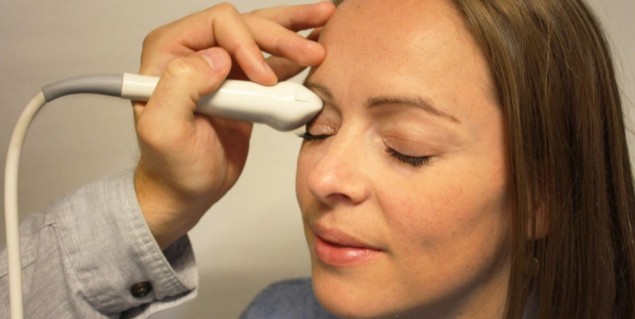
Elevated intracranial pressure following an accident can lead to brain injury and spinal cord damage. Currently, such pressure increases are detected using a sensor that’s surgically inserted into the patient’s skull in an operating theatre. A new tool offers the potential to perform diagnostic tests at the scene of the accident, using non-invasive ultrasound eye examinations to detect elevations in intracranial pressure.
The tool was developed by researchers at SINTEF, in collaboration with paediatric neurosurgeon Llewellyn Padayachy from the University of Cape Town and Red Cross War Memorial Children’s Hospital. The project was launched by a study involving 16 paediatric patients in South Africa: eight who suffered from elevated cranial pressure and eight with normal levels. “We obtained good results with high levels of clinical accuracy, and using these were able to further develop the technology,” says SINTEF researcher Reidar Brekken.
The research group in Cape Town has now completed a new study of 28 patients, in which the ultrasound data were analysed using software developed by the SINTEF team. This study included children undergoing invasive intracranial pressure measurement as part of their clinical management. Prior to these measurements, the researchers acquired ultrasound images of the optic nerve sheath and processed them to obtain the deformability index (DI), a parameter quantifying the pulsatile nature of the optic nerve sheath.
Results showed that the DI was significantly lower for patients with high versus normal intracranial pressure. A DI cut-off value of 0.185 of below demonstrated 89.5% sensitivity and 88.9% specificity. Combining the DI with measurement of optic nerve sheath diameter (ONSD) improved the sensitivity to 94.7%. The team also saw improved correlation with intracranial pressure measurements when using a combined analysis of DI and ONSD (Operative Neurosurgery 10.1093/ons/opy231).
The first version of the ultrasound device was manually-operated and demanded high levels of specialist expertise. Now, the team has incorporated artificial intelligence into the technology to make it more user-friendly. This will enable many more people to operate the tool and enable intracranial pressure measurements to be carried out at an earlier stage — allowing ambulance personnel to perform examinations at accident scenes, for example.
“For the most part, artificial intelligence assists by automating the measurement process,” explains Brekken. “Whereas previously we had to input data manually and identify structures displayed on the resulting image, our aim now is that the only thing an operator has to do is place the ultrasound probe on the patient’s eye. The machine will then identify the structures and deliver the measurement results.”
Brekken emphasizes that performing clinical assessments at accident scenes will make a significant difference to the patient. “It will help to save lives and prevent potential brain damage,” he says. “It will also be less expensive to implement because there will be no need to transport patients for costly surgical interventions in operating theatres in order to perform an examination.”
The team now intends to further advance and quality assure the technology, as well as develop the artificial intelligence component into a diagnostics tool. Immediate plans include testing the device on 200 patients suffering from head injuries, in collaboration with neurosurgeon Eirik Helseth at the Ullevål University Hospital. This will be the first time that the technology will be tested on adults.
The researchers are also looking into ways to exploit this technology beyond the examination of head injuries. “It isn’t just traumas such as blows to the head that cause elevations in intracranial pressure,” says Brekken. “Other neurological conditions, such as brain tumours and haemorrhaging can also result in pressure increases.”
The device is currently being commercialized by the company NiSonic.



